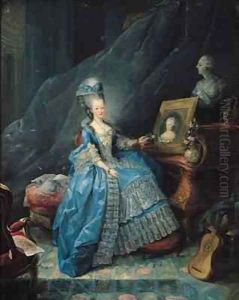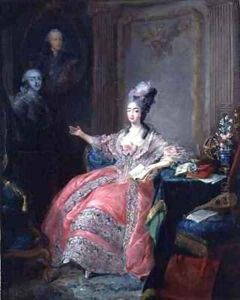Jean Baptiste Andre Gautier D'Agoty Paintings
Jean Baptiste Andre Gautier D'Agoty was a French artist, printmaker, and publisher best known for his anatomical mezzotints and color printing innovations. Born in 1716 in Marseille, France, Gautier D'Agoty was initially trained in painting but later became a pupil of Jacob Christoph Le Blon, the inventor of three- and four-color printing processes. Under Le Blon's guidance, Gautier D'Agoty learned the technique of color mezzotint, which he would eventually modify and enhance throughout his career.
After Le Blon’s death in 1741, Gautier D'Agoty moved to Paris where he began to produce his own works and develop his own printing business. He took Le Blon’s three-color process and added a fourth color, usually black, creating a more nuanced and detailed image that was unprecedented at the time. This innovation allowed him to create prints with a depth and realism that were extraordinary for the period, though his work was sometimes criticized for lacking accuracy.
Gautier D'Agoty's most significant contributions were in the field of anatomical illustration. In 1745, he published his first anatomical atlas, 'Anatomie Générale,' which featured life-sized color prints of the human body in various dissected states. The atlas was notable not only for its technical achievements in printing but also for its artistic merit and its attempt to depict anatomy with exceptional detail and vivid color. Following the success of his first atlas, he published several more anatomical works, which were used for medical education and also garnered interest from the general public due to their lurid and captivating imagery.
In addition to anatomical works, Gautier D'Agoty also published other scientific illustrations and even ventured into portraiture and journal publication. He produced portraits of notable individuals of his time and was involved in publishing 'Observations sur l'histoire naturelle, sur la physique et sur la peinture,' a journal that covered a wide range of topics.
Gautier D'Agoty's work was not without controversy. His graphic depictions of the human body, often in the form of flayed figures, pushed the boundaries of what was considered appropriate for public consumption at the time. Despite this, his work provided an invaluable resource for medical professionals and contributed significantly to the understanding of human anatomy.
Jean Baptiste Andre Gautier D'Agoty died in 1785. His legacy is marked by his pioneering efforts in color printing technology and his unique contribution to anatomical illustration. His prints remain of interest not only to historians of medicine and art but also to collectors and enthusiasts of the macabre and beautiful.

